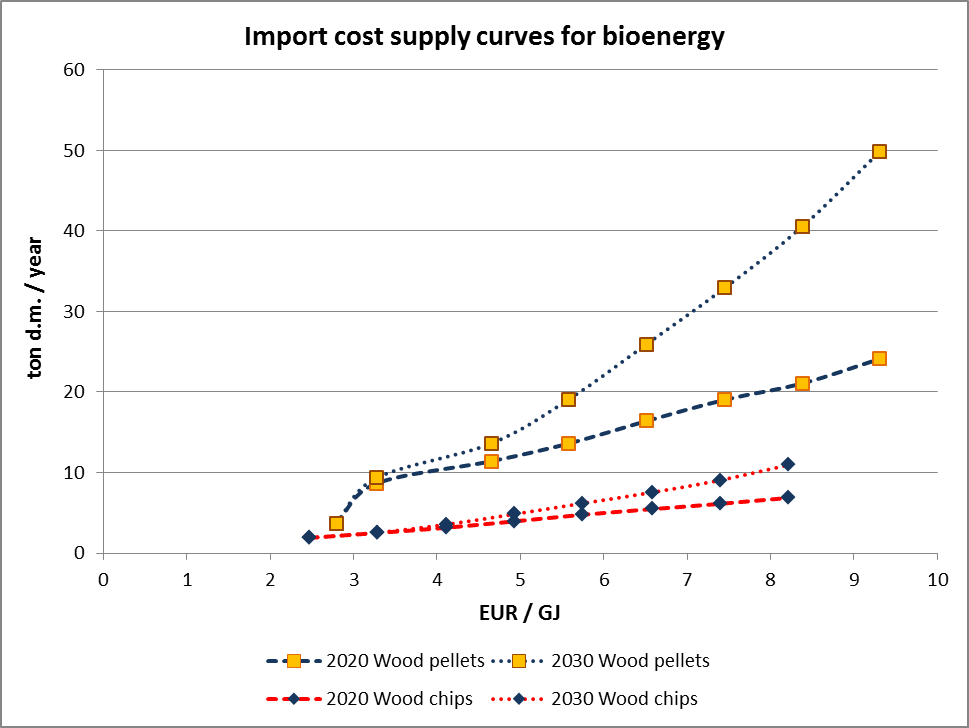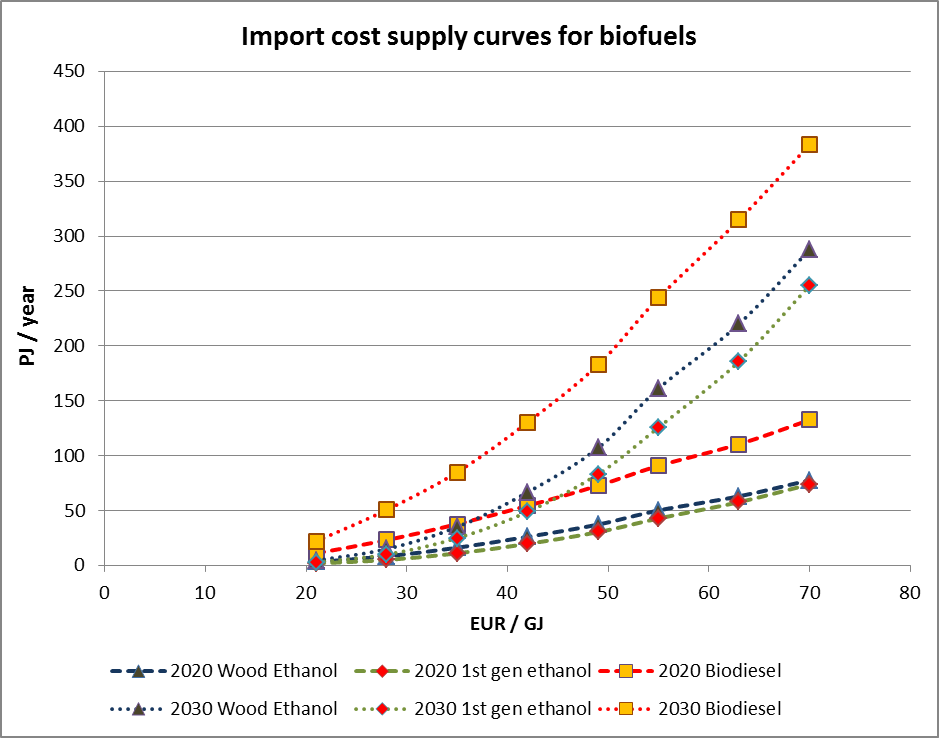 Imports
Imports
For the S2BIOM project, the potential of import of lignocellulosic biomass was assessed and specified in the form of cost supply curves from countries outside EU28 for 2012, 2020 and 2030. Cost levels refer to the biomass that is present in main EU harbours after being shipped from the region of origin. Any additional cost to transport and further pre-treat the biomass within the EU territory before going into the biomass conversion installation have not been included. The cost level is therefore reasonably comparable to the road-side cost of the European biomass displayed in the Supply viewer (Europe) and the 'Cost supply (Europe)' also assessible here from the main menu of this toolset.
The import potential data were generated by implementing the interlinked GLOBIOM (Global Biosphere Management Model) and G4M (Global Forest Model) models for a baseline situation to create cost supply relationships of biomass trade (import). The cost-supply relationship for imports into the EU28 was assessed for wood chips and pellets, 1st generation ethanol from wheat, corn and sugar cane; 2nd generation ethanol from woody biomass; and biodiesel from rape, sunflower, soya and palm oil [PJ per year], while the price is defined in terms of the cost that a consumer needs to pay for the commodity [EUR per GJ] after shipped to a main EU harbour.
Further explanation of how the cost-supply potentials for imports were assessed and a description of the results the Imports document can be consulted. The cost-supply data for imports can also be dowloaded in excel format here.
The 2 resulting cost-supply curves are presented at the right.

Figure 1: The estimated cost supply curves in 2020 and 2030 for bioenergy. The import potential is defined in terms of import of wood chips and wood pellets [ton dry mass per year], while the price is defined in terms of the cost that a consumer needs to pay for the feedstock [EUR per GJ].

Figure 2: The estimated cost supply curve in 2020 and 2030 for biofuels. The potential is defined in terms of import of 1st generation ethanol from wheat, corn and sugar cane; 2nd generation ethanol from woody biomass; and biodiesel from rape, sunflower, soya and palm oil [PJ per year], while the price is defined in terms of the cost that a consumer needs to pay for the commodity [EUR per GJ].
